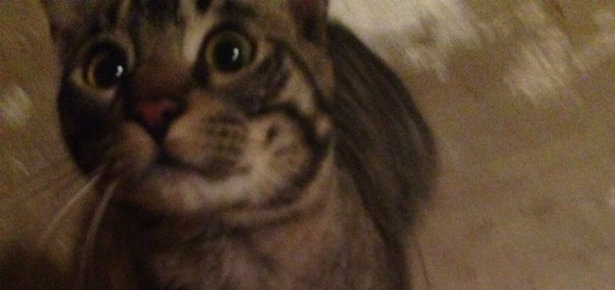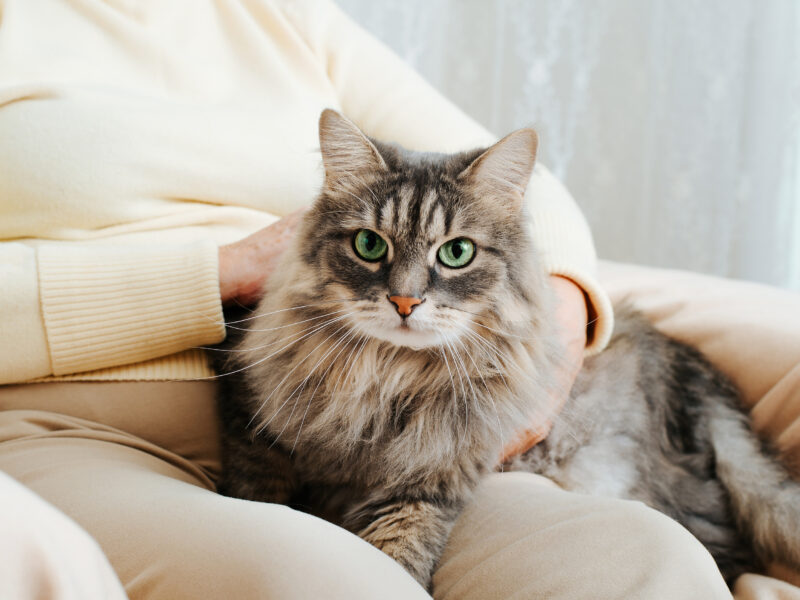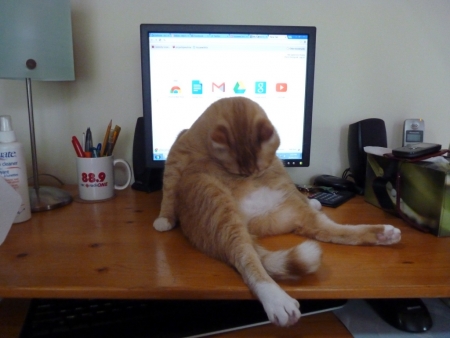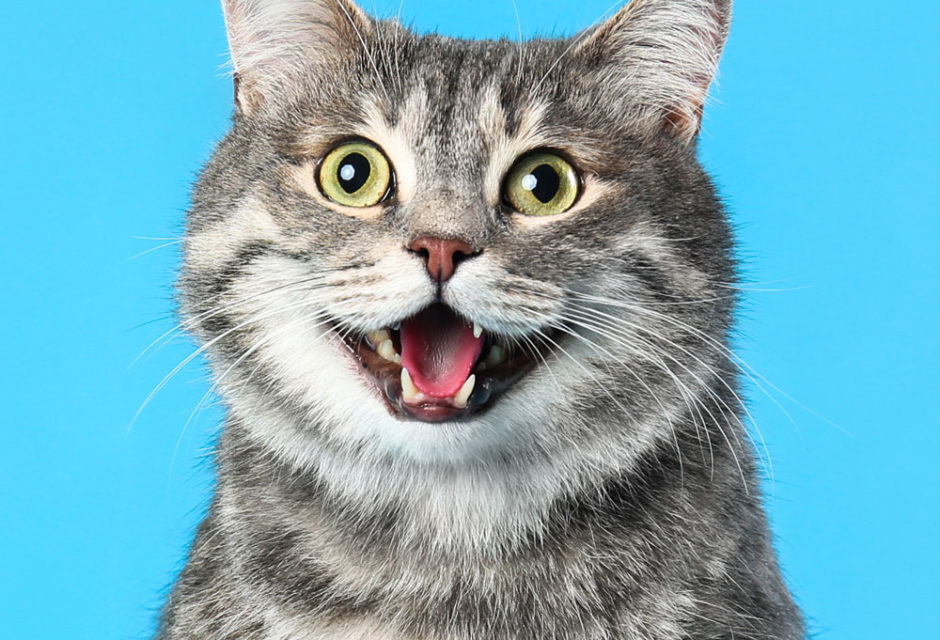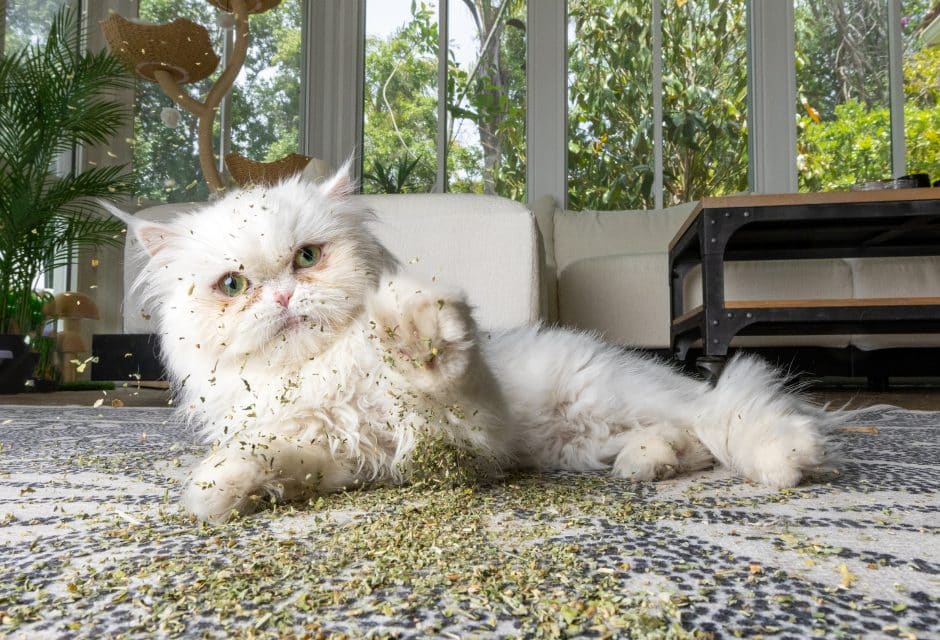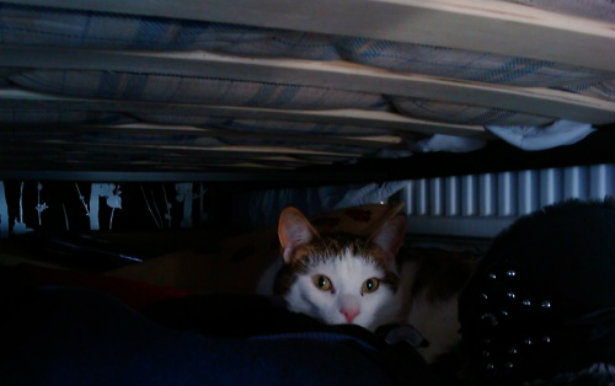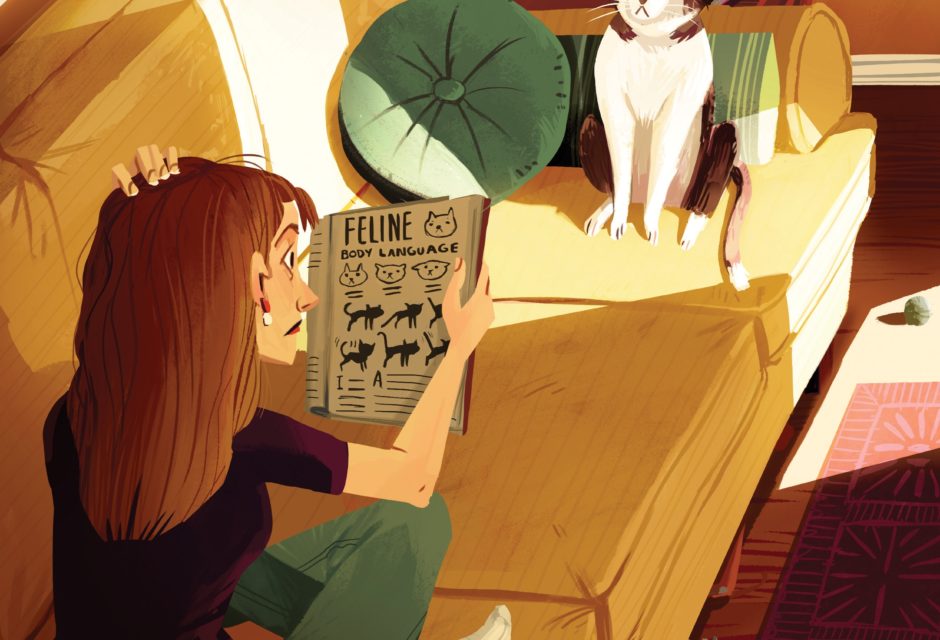

The Expressive Cat
How to read cat expressions: deciphering feline body language, facial expression & vocal cues
The frenzied schedule of college life made it impossible for Julie to care for a pet of her own. But when she graduated, landed a job, and moved into her own apartment, she happily decided to adopt her first cat, a young adult Tabby named Bucky. Rescued from a hoarding environment, Bucky had been subjected to many other cats, some friendly, others not. Though generally friendly, his past unpredictable social surroundings required him to utilize a litany of instinctive cat expressions; Physical, facial, and vocal cues to tell other cats what his state of mind was—whether he felt safe, endangered, scared, happy or aggressive. These natural feline modes of communication were well practiced by Bucky when Julie took him home; all Julie needed to do was learn to speak the same language.
Cats Don’t Speak Dog!
At first, Bucky seemed happy and curious. But when Julie began to robustly play with him, his feline instincts kicked in. Misinterpreting a swishing tail and deliberate warning stares as signs of a willingness to play, she gave him a vigorous, two-handed rub and was rewarded with a bite on the hand.
Many pet lovers don’t fully understand cat communications. Julie guessed that Bucky’s upright, flagging tail meant, as it does in dogs, that he was into vigorous play. But to the contrary, a cat’s twitchy, swishing tail usually denotes worry. Likewise, though flattened ears in a dog most often denote submission or compliance, in a cat, it most often signals fear and possible offensive attack. (In contrast, a scared dog with flattened ears may bite defensively, but will most often not go out of his way to provoke aggression.) The difference between normal cat expressions and how other species communicate can create havoc in a household, so ensure all pets are comfortable with each other before leaving them alone together.
 Why Speak Cat?
Why Speak Cat?
A cat’s moods and intentions can often be predicted by specific body postures, facial expressions, and vocal cues. Learning what these are can hold the key to preventing aggression or anxiety and to building a deeper, more loving bond with your cat. Plus, you’ll be able to discern how your cat feels about his environment, family, and friends. But in order to do that, you first need to know what to look for.
The Tell of the Tail
The tail, specifically its movements and positioning, is perhaps the most expressive part of a cat and key to deciphering your cat’s mood, attitude, and comfort level. A tail held high and steady generally denotes a happy, confident cat. A relaxed, easy sway at this point can denote a playful, sociable attitude. If a high tail lashes to and fro, however, the cat most likely feels troubled, defensive or even aggressive. If your cat’s tail is held down between her legs, she may be worried and unsure, while a low, twitchy tail often signals a coming stalk. And if she wraps her tail around you, she’s happy and glad you’re around.
The Look On a Face
They say a face never lies. Not so with cat expressions, whose pretty facial features belie what’s going on inside. For instance, contrary to expectation (at least for those not yet adept at reading “cat”), a slitted half-eye look means your cat is content and confident, whereas a wide-eyed look with dilated pupils says your cat is tense and perhaps entering defensive mode. An unwavering stare denotes either a threatened feeling or a hunting mindset. And if you see an open mouth with heavy breathing and visible teeth, you’d better give your cat some breathing room!
Body Postures
The movement and positioning of your cat’s body is a major feline disposition indicator. For instance, the stalk—a slow methodical advance—is predatory and can mean aggressive play or an offensive move. But if she lies on her side, sits, or rests on her belly, your cat is feeling confident and safe. An arched back with flat fur also denotes comfort. Add raised fur to the arched posture, though, and the mood changes to anxious and defensive. If your cat stands upright and motionless, she is probably alert to a possible concern. Crouched, focused, and tensed? She’s ready to act. If arched, retreating, and swishing her tail? Watch out!
A belly-up posture can mean playful, but it can also mean she feels threatened. Determining which depends on the context of the situation: if she goes belly-up in response to rough play, or to the presence of a dog or cat, it might mean a fight is coming. A belly-up cat can do serious damage with her claws, particularly her back pair, without surrendering territory or expending much energy. Ever have your cat rub her head and body on you or watch her do it to furniture? This maneuver, though friendly, is really a marking behaviour, her way of saying “this is mine!” Kneading, however, is a kittenish behaviour, a holdover from nursing. It means your cat thinks you are her mommy—a great position to be in.
Ears
Flattened ears generally mean your cat feels threatened in some way. Erect, steady ears mean she feels happy, alert or simply curious. Twitchy, agitated ears denote a certain nervous energy or an ensuing defensive move. Cats on the hunt will also move their ears every which way to locate prey.
Voice
Your cat’s vocalizations can tell you much about her mood, and intent. Meowing, for instance, is almost exclusively a catto- human communication; meowing among cats is usually only seen between kittens and adults. Though usually indicative of good mood, incessant meowing can mean your cat wants something— food, attention, outdoor access, or whatever else she desires but is being denied. Purring means “I’m comfy, safe, and happy.” Revel in it, for it means you are loved and trusted. A hiss, spit or growl, however, means, “step off, dude, I’m ready to fight!” Caterwauling is usually reserved for cat-on-cat aggression or indicative of a mating event.
Handling
Hand-in-hand with understanding your cat’s body language should be a perception of how and when to handle your cat. Whenever possible, it should be done on the cat’s terms and not your own. This means not grabbing her, then compelling her to accept petting. Though there will be times when handling will be crucial to your cat’s wellbeing (grooming; examining; treating wounds), try to choose moments when she is open to or even desirous of contact. When she approaches you and bonks you with her head, that’s a signal; she’s saying “pet me, you fool.” Use that moment to caress her, while casually checking her over. And, when she’s had enough and walks off, accept it. If you always let her determine these physical interactions, you’ll develop a much more trusting relationship with her.
Paws are a sensitive area as they are crucial to a cat’s survival, so be casual and fleeting with them. Trimming nails should be done from kitten-hood in a fast, competent manner, perhaps one paw per session, with hours in between. Providing your cat with several sisal scratching posts not only protects your furniture but also helps your cat keep her nails short and in good shape.
Touching your cat’s head is usually fine, especially if she has prompted the interaction. Do so lightly, though; remember she’s no retriever. Handling a cat’s belly is often a no-no, unless your cat likes it. It can initiate an attack with paws, so do so fleetingly and only if she likes it.
Avoid handling her tail except in fleeting moments, such as when she wraps it around your leg in an affectionate gesture. Cats use their tails for balance and can be very protective of them, so go easy.
Grooming, especially for longhaired cats, should be started early in the cat’s life. Short sessions should be followed by a reward and perhaps a play session. Easy strokes of the brush or comb, combined with soft talk and a treat or two can make these sessions fun and help bond you even closer. While grooming or handling, take quick peeks into her ears and mouth. Make this part of the grooming process. But take care with older rescue cats as they do not know you from kitten-hood and will not hold the same level of trust. Remember, to a kitten you are mom, but to an older rescue, you’re just a friend.
When guests visit, have them be passive with regard to interacting with your cat. Let her determine the level of interaction. Many cats will at first be standoffish with strangers; respect this, so that eventually she can learn to trust them, too. Make sure they never play rough with her; have them use teaser toys, laser pens or other toys at first instead of going right to handling, unless your cat openly asks to be touched.
By understanding your cat’s body language and by letting her determine when, where, and for how long you interact, you’ll build a bond with her that will last for years and make the partnership special. You’ll become fluent in feline and know instinctively when she’s happy and when she’s in need. Remember—she is always communicating—you just have to know how to read the signs.
For more information on understanding your cat, check out the Reading Section of the Modern Cat e-Shop!
Join the newsletter and never miss out on cat content again!
"*" indicates required fields
By clicking the arrow, you agree to our web Terms of Use and Privacy & Cookie Policy. Easy unsubscribe links are provided in every email.





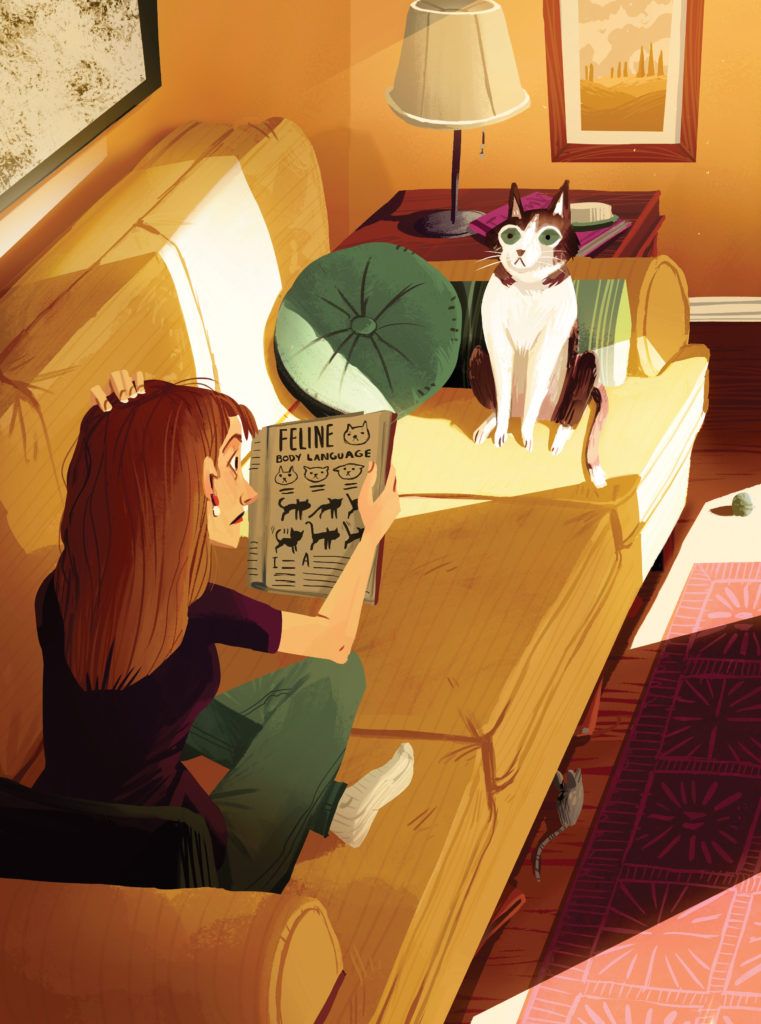 Why Speak Cat?
Why Speak Cat? 